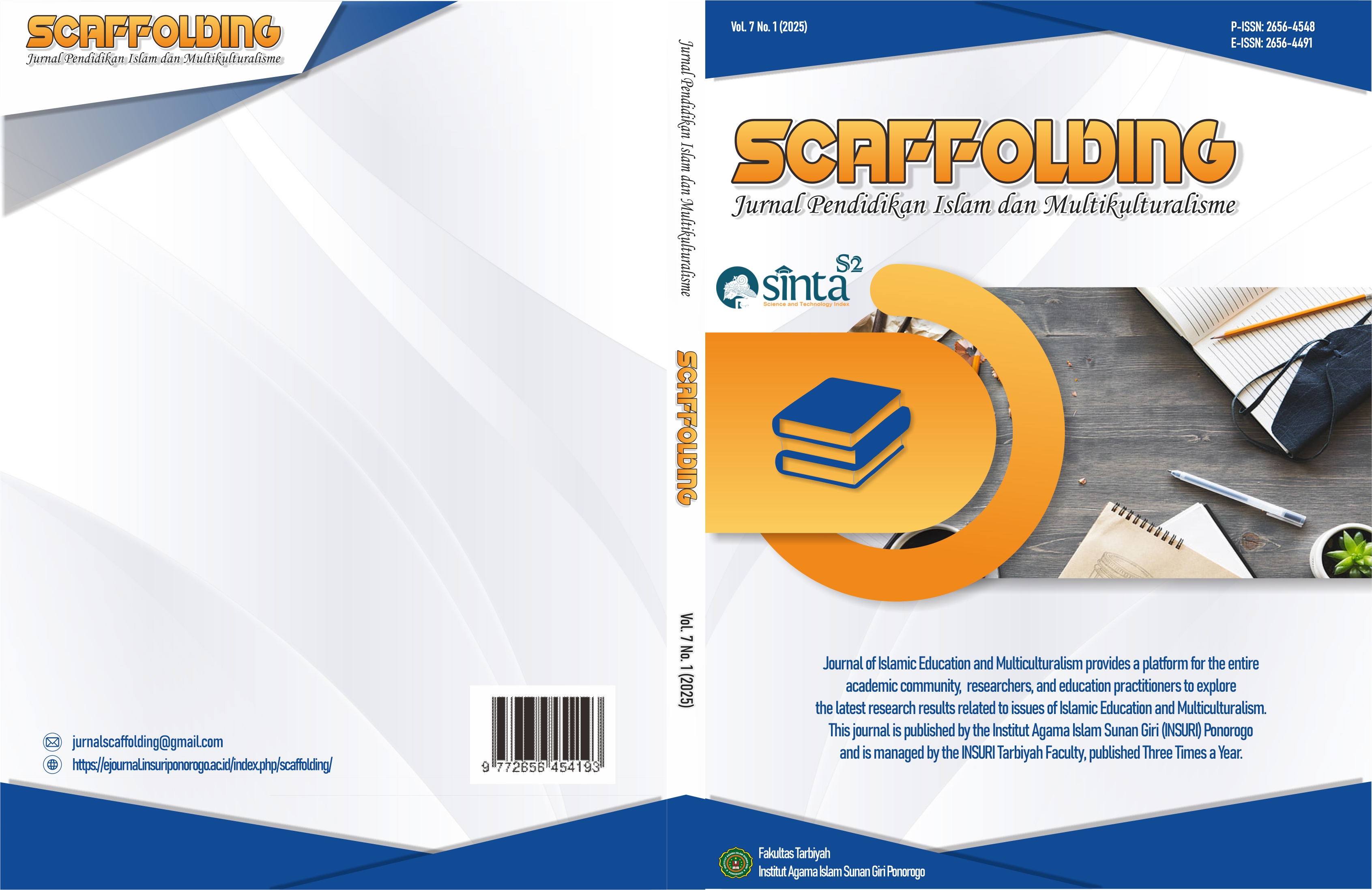Strategy for Continuous Quality Improvement at Vocational High School
DOI:
https://doi.org/10.37680/scaffolding.v7i1.6975Keywords:
Educational Quality Improvement, Graduate Relevance, Implementation of SPMI, School-Industry Collaboration, Vocational SchoolAbstract
This study analyzes the implementation of the Sistem Penjaminan Mutu Internal (SPMI) as a strategy for continuous quality improvement at Tambakboyo Vocational High School. Using a qualitative case study approach, data were collected through in-depth interviews with key stakeholders, participatory observation, and document analysis. Interviews involved school principals, teachers, administrative staff, students, and industry partners to gain insights into SPMI implementation. Observations were conducted through direct engagement in school activities, quality assurance meetings, and industry collaboration programs, while document analysis reviewed policies, reports, curriculum guidelines, and employment data. Data were analyzed using a qualitative descriptive approach through data reduction, display, and conclusion drawing, with triangulation ensuring validity. The findings highlight how stakeholders collaborate to align educational quality policies with industry demands through the PPEPP model (Penetapan, Pelaksanaan, Evaluasi, Pengendalian, Peningkatan Standard). Implementing SPMI positively impacts academic and non-academic quality, enhances graduate employability, and strengthens school-industry partnerships. A well-structured organization and consistent quality policies facilitate optimal outcomes, with industry collaboration ensuring curriculum relevance and skill alignment with labor market needs. This strategy enhances graduate competitiveness and serves as a model for addressing global educational and workforce challenges
Downloads
Published
How to Cite
Issue
Section
License
Authors who publish with this journal agree to the following terms:
Authors retain copyright and grant the journal right of first publication with the work simultaneously licensed under a Creative Commons Attribution-NonCommercial 4.0 International License that allows others to share the work with an acknowledgement of the work's authorship and initial publication in this journal.
Authors are able to enter into separate, additional contractual arrangements for the non-exclusive distribution of the journal's published version of the work (e.g., post it to an institutional repository or publish it in a book), with an acknowledgement of its initial publication in this journal.
Authors are permitted and encouraged to post their work online (e.g., in institutional repositories or on their website) prior to and during the submission process, as it can lead to productive exchanges, as well as earlier and greater citation of published work.



